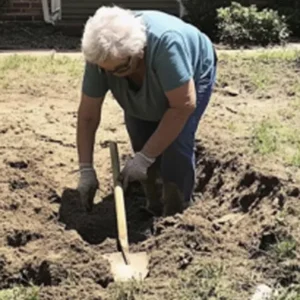Tragedy Over the Capital: A Comprehensive Account of the Fateful Flight and Its Aftermath
In a heart-wrenching turn of events that has shocked the nation, a fatal accident involving an American Airlines flight and an Army Black Hawk helicopter over Washington, D.C. has left a community in mourning and raised serious questions about aviation safety. In the final moments before the catastrophe, the pilot of the doomed flight expressed a hopeful eagerness to spend precious time with his family—a stark contrast to the impending disaster that would soon claim his life and those of many others. This article delves into the details of that tragic day, recounts the personal stories of those involved, and examines the circumstances that led to one of the worst aviation disasters in recent memory.
A Farewell Shrouded in Hope
On that fateful evening, as Flight 5342 made its final approach toward Reagan National Airport, there were moments of hope and anticipation amidst the routine pre-flight procedures. Among the crew was Captain Jonathan Campos, a dedicated pilot whose passion for flying had been evident since his childhood. According to heartfelt recollections shared by his family, Campos was not only committed to his profession but also excited about the future he had planned. In what would be his final conversation, captured by his grieving uncle John Lane during an interview from his Brooklyn home, the captain spoke of an upcoming family trip—a celebration he was eagerly awaiting.
“Campos was living his dream,” Lane recalled, his voice breaking as he recounted the final moments of his nephew’s life. “He used to play with toy planes when he was a kid. His dream was always to fly bigger, better planes. He truly loved what he did.”
Lane’s poignant words paint a picture of a man whose dedication and joy in flying were evident from an early age. The captain had spoken fondly about spending time with his family on a cruise aboard the Icon of the Seas scheduled for the following week. Ten family members were set to join him on what was supposed to be a grand celebration, marking not just a vacation but a cherished moment of reunion and happiness.
“Before boarding the aircraft, I spoke to him for about ten minutes,” Lane said. “He sounded so happy, full of excitement about the trip ahead. It’s hard to believe that those were his last words.”
The Ill-Fated Flight and the Collision Above the Potomac
As Flight 5342, carrying 67 passengers and crew members, neared its destination on a chilly Wednesday evening, disaster struck in an instant. Just before 9 p.m., as the plane was closing in on Reagan National Airport, it became entangled in a catastrophic collision with an Army Black Hawk helicopter. The incident occurred roughly 400 feet above the Potomac River, where the two aircraft converged in a massive fireball that lit up the night sky and sent shockwaves throughout the region.
Among the many victims was First Officer Samuel Lilley, a 29-year-old pilot whose career had been marked by promise. Lilley, who had been recently engaged and was on the verge of a promotion to captain, was one of the many who lost their lives in the explosion. Also among the dead were flight attendants Ian Epstein and Danasia Elder, whose dedication to passenger safety and comfort had made them well-regarded members of the crew.
The chaos that ensued in the minutes following the collision left rescuers scrambling to recover bodies from the frigid waters of the Potomac. In a scene reminiscent of a nightmare, police divers worked tirelessly amid the wreckage, trying to retrieve as many victims as possible. The high number of casualties and the complexity of the rescue operations have made this incident one of the most harrowing in recent American aviation history.
Remembering Jonathan Campos: A Life Devoted to Flight
For those who knew him, Jonathan Campos was much more than a pilot—he was a symbol of determination and passion. Born and raised in Brooklyn, Campos grew up in the modest surroundings of Coney Island, where the dream of soaring through the skies took root early on. His journey from a child fascinated by toy airplanes to a professional pilot was a source of immense pride for his family and community.
“His mother, who has now left her local home to be with him in Washington, is inconsolable,” said Lane. “We’re all devastated by this loss. His dedication to flying was not just a career choice—it was his passion, his very way of life.”
Campos’s academic and professional achievements further underscored his commitment. After graduating from Embry-Riddle Aeronautical University in New Jersey with a degree in aeronautical science in 2015, he honed his skills at the Epic Flight Academy in New Smyrna Beach, Florida. His progress through the ranks was marked by a quiet determination and a focus on excellence that endeared him to his instructors and colleagues alike.
He had recently settled in Orlando with his girlfriend, where he not only pursued his career but also enjoyed a balanced lifestyle that included playing football and basketball. His life, though tragically cut short, was filled with promise and a spirit that inspired those who knew him. His uncle’s recollections paint a portrait of a man who was as much defined by his dreams as by the love and support of his family.
Unraveling the Events Leading to the Disaster
In the wake of the accident, initial investigations have begun to shed light on the series of events that may have contributed to the catastrophe. Preliminary internal reports from the Federal Aviation Administration (FAA) have pointed to several unusual operational factors on the night of the collision.
One of the most significant revelations came from an internal review, which indicated that staffing issues might have played a role. Typically, air traffic control at Reagan National involves two controllers during the busier parts of the day. However, after 9:30 p.m., it is common for a single controller to manage both plane and helicopter traffic due to the lower volume. On this particular evening, however, a supervisor had allowed one air traffic controller to leave early, combining responsibilities before the designated cutoff time. This deviation from normal procedure has raised serious concerns about oversight and operational safety during critical hours.
Adding another layer of complexity to the incident was the behavior of the Army helicopter involved in the collision. Reports suggest that the helicopter, which was transporting three soldiers at the time, may have strayed from its authorized flight path. Sources indicate that the pilot of the Black Hawk deviated by as much as half a mile from his intended course and ascended to an altitude over 300 feet—well above the permitted 200 feet for that segment of the flight.
The convergence of these factors—a shortage in air traffic control personnel during a critical window and the helicopter’s unauthorized altitude—created a scenario ripe for disaster. As investigators continue to analyze the data recorded by the “black box” recorders from both the airplane and the helicopter, the full scope of the procedural and technical failures will likely come into sharper focus.
The Human Toll: Stories of Loss and Grief
Beyond the statistics and technical details, the true tragedy of this disaster lies in the personal stories of those who lost their lives. The victims ranged from seasoned professionals to young individuals with their whole lives ahead of them. Among the deceased were not only pilots and flight attendants but also young talents and families whose futures were irrevocably altered.
For instance, among the young American figure skaters caught in the tragedy were Spencer Lane, aged 16, Brielle Beyer, 12, and Jinna Han, 13. These budding athletes, whose potential was bound by dreams of national championships and international competitions, were among the innocent lives snuffed out by the disaster. Their loss resonates deeply with communities across the country, serving as a somber reminder of the fragility of life.
Also on board were notable figures from the world of sports and the arts. The well-known Russian skating duo, Vadim Naumov (56) and Evgenia Shishkova (53), were among those who perished. Their careers, marked by decades of dedication and the pursuit of excellence, ended abruptly in the same tragic incident.
The disaster also claimed the life of Kiah Duggins, a 30-year-old civil rights lawyer with a history that included beauty pageant success, a Harvard Law School degree, and an internship at the White House during the Let Girls Learn campaign spearheaded by former First Lady Michelle Obama. Duggins was returning to Washington after visiting her hometown in Wichita, leaving behind a legacy of advocacy and public service that now stands as a testament to her commitment to justice.
A young student from Cedarville University in Ohio, Grace Maxwell, aged 20, was also among the victims. Studying biomedical engineering, Maxwell was on her way back to school when fate intervened. Her promising future in the field of medical innovation was abruptly halted, leaving behind a community in shock and grieving for what could have been.
Perhaps one of the most devastating losses was that of an entire family from Virginia. The Ashburn family, returning home from the 2025 US Figure Skating Championships in Wichita, was shattered by the crash. Among them were 11-year-old Alydia and 14-year-old Everly, both of whom had recently competed with dreams of a bright future in figure skating. Along with their parents, Donna and Peter, the family’s story has become one of the most heart-wrenching chapters in the aftermath of the disaster.
The Investigation and the Road Ahead
In the days following the accident, federal agencies and aviation authorities have mobilized to conduct a thorough investigation. The National Transportation Safety Board (NTSB) has recovered the black box recorders from both the airplane and the helicopter, and investigators are meticulously piecing together the timeline of events. The early findings point to a confluence of human error and procedural lapses, but the complete picture remains to be determined as more data is analyzed.
FAA officials have acknowledged that the staffing decisions made on the night of the crash were unusual. The decision to consolidate air traffic control responsibilities into a single role—a deviation from standard practice—has come under intense scrutiny. Additionally, the deviation in the helicopter’s flight path is now a focal point of the investigation. The Army has launched its own inquiry into why the Black Hawk ascended beyond its authorized altitude and strayed from its course.
As investigators work to determine the precise causes of the accident, the families of the victims are left grappling with grief and uncertainty. In the wake of such a catastrophic event, the community is demanding answers and accountability from the agencies responsible for ensuring the safety of both civilian and military aircraft. Lawmakers and aviation experts alike have called for a comprehensive review of current protocols and the implementation of stricter measures to prevent a recurrence of such a tragedy.
A Community Mourns: The Ripple Effect of Loss
In the days since the accident, the impact of the tragedy has been felt far and wide. Vigils and memorial services have been held in cities across the region, as friends, family members, and colleagues gather to honor the lives lost and to seek solace in one another’s company. The emotional toll on the families is palpable—many are still coming to terms with the sudden and violent loss of their loved ones.
Jonathan Campos’s mother, for example, has left her local residence to be with her son’s remains in Washington, a poignant symbol of the deep personal anguish that accompanies such loss. Friends and family have expressed a shared sense of disbelief and sorrow, as they struggle to reconcile the image of a bright, promising young man with the tragic circumstances of his final moments.
The broader aviation community, too, is reeling from the incident. Pilots, air traffic controllers, and aviation safety experts have begun to reflect on the implications of the disaster, with many questioning whether systemic changes are needed to avert future tragedies. The hope is that through rigorous investigation and the implementation of improved safety protocols, the memory of those who perished will serve as a catalyst for meaningful change in the industry.
Lessons Learned and the Future of Aviation Safety
While nothing can undo the tragedy that unfolded on that night, there is a collective resolve to learn from the events and to implement measures that will enhance aviation safety moving forward. The incident has already spurred discussions among regulators and industry stakeholders about the importance of maintaining robust staffing levels and strict adherence to flight protocols—especially during critical hours when the margin for error is slim.
A renewed focus on training, oversight, and the integration of advanced technological aids in air traffic management is emerging as a key priority. The hope is that these initiatives will not only prevent similar accidents in the future but also restore public confidence in the systems designed to protect travelers. As investigators continue to unravel the myriad factors that led to the collision, every lesson learned will be crucial in forging a safer path forward for the aviation community.
Concluding Reflections: Remembering Lives and Inspiring Change
In the wake of this unspeakable tragedy, the stories of the individuals who lost their lives remind us of the profound human cost behind every statistic. Jonathan Campos, Samuel Lilley, the flight attendants, and all the other victims were more than just names in a report—they were individuals with hopes, dreams, and a deep commitment to their respective fields. Their loss is not only a personal tragedy for their families but also a stark reminder of the vulnerabilities inherent in our complex transportation systems.
As communities across the nation continue to grieve, there is also a renewed call for systemic reform. The accident has highlighted critical gaps in current protocols, and as painful as the loss is, it may ultimately serve as a turning point in the pursuit of safer skies. The legacy of those who perished may well be found in the steps taken to improve aviation safety for generations to come.
In the end, the story of Flight 5342 is one of both heartbreak and hope—a reminder that even in our darkest moments, there is the possibility of change, of learning, and of honoring the memory of lost loved ones through action. As investigators and policymakers work to ensure that such a tragedy is never repeated, the voices of those affected—like John Lane’s tender memories of his nephew—will continue to inspire a commitment to safety, transparency, and accountability.
For now, the nation stands united in mourning, with families, friends, and communities rallying together to support one another. The journey toward healing will be long and fraught with challenges, but in the collective resolve to remember and honor those lost, there is also the promise of a safer future—a future where every life is cherished, and every lesson learned serves as a beacon of hope.
Epilogue
As we reflect on the events of that fateful night, it becomes clear that the ripple effects of this disaster extend far beyond the immediate tragedy. It is a story of dreams unfulfilled, of lives devoted to a passion for flight, and of a community determined to seek answers in the face of overwhelming loss. The final words of Captain Jonathan Campos—a message of hope and anticipation for a family celebration—are a poignant reminder of the potential that was lost. Yet, in that potential lies the impetus for change.
In the coming months, as the investigations continue and as the aviation industry re-evaluates its practices, the memory of those who perished will remain at the forefront. Their stories, filled with promise and marked by tragedy, will be the driving force behind a renewed commitment to safety, innovation, and accountability in the skies above.
While no measure can bring back the lives lost that tragic evening, the pursuit of answers and the implementation of better safeguards will ensure that their legacy is not in vain. In every review, every new regulation, and every technological advancement, the hope is that future pilots, flight attendants, and passengers will fly with an added layer of protection—one forged in the crucible of loss but aimed squarely at preventing another such tragedy.
As we honor the memories of Jonathan Campos, Samuel Lilley, and the many others who lost their lives, let us also embrace the call to action that their stories inspire. The road ahead may be steep and filled with challenges, but it is a road that must be traveled, for in the quest for safer skies lies the promise of a future where every takeoff and landing is a testament to the lessons of the past and the hope for tomorrow.
In remembering this tragic chapter in aviation history, we not only pay tribute to those we have lost but also commit ourselves to a future where the highest standards of safety and care guide every flight. Their memory is our compass—a reminder that even in the midst of darkness, the pursuit of a safer, better future remains






